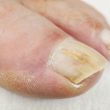Getting into sports is a great idea if you want to fend off all kinds of preventable health-related issues such as obesity, type 2 diabetes, hypertension, cardiovascular disease and various types of cancer.
Did you know that there is a strong link between sports and skin cancer, particularly if engaging in outdoor sports is the one involved? It’s just so frustrating to learn that doing something that’s known to keep you healthy can in fact leave you battling a very deadly form of cancer!
But before you say “bye-bye” to your favorite outdoor sports or completely abandon your plan on becoming a top athlete one day, keep on reading – below you will come across some important matters that you need to know about outdoor sports and skin cancer, such as how you can keep yourself from winding up with skin cancer while continuing to be a sportsperson or having an active outdoor lifestyle.
The Culprit: Being Under the Sun
Sports can be indoors or outdoors. The kinds that are performed outside gymnasiums or covered arenas are the ones that are associated with the development of skin cancer. It’s for the obvious fact that engaging in outdoor sports can considerably increase an athlete’s risk of exposure to the sun – too much sun is a major risk factor for skin cancer.
The sun per se is not the one to blame, but the ultraviolet (UV) rays that it emits.
Are you someone who is into mountain or alpine sports? Then you’re risk of ending up with skin cancer is higher than usual – high altitudes take you closer to the sun, and snow and ice can focus the sun’s UV rays on you.
A Couple of Types of UV Rays
The sun’s harmful UV rays actually come in a couple of forms, and they are UVA and UVB. Let’s take a quick look at their key difference:
UVA
It is capable of penetrating the deeper layer of the skin, which is the dermis. This is a very serious matter as it can lead to cellular damage and mutation. Beauty-conscious individuals, read up: UVA is the one responsible for photo-aging, which is skin damage and aging.
UVB
Even though it is capable of reaching the topmost layer of the skin, which is your epidermis, UVA can still cause unwanted damage to your skin cells. In addition, it’s something that’s responsible for sunburns. Having a history of severe sunburn is a major risk factor for skin cancer.
Because both UVA and UVB rays the sun gives off can contribute to an increased risk of deadly skin cancer development, it is highly recommended for you to use sunscreen that offers protection from both types of UV rays.
According to dermatologists, it’s a good idea for you to go for sunscreen whose sun protection factor (SPF) is rated 30 or even higher in order to ensure optimum protection from those UV rays. Dermatologists add that you should:
- Apply sunscreen 30 minutes before engaging in outdoor sports or any other activity done under the scorching sun.
- Generously apply it on all exposed skin, including your face – it’s a good idea to invest in a high-quality sunscreen for the face.
- Reapply sunscreen after every 2 hours or each time it’s washed away by sweat and water.
A Lowered Immune System is a Contributing Factor Too
One of the perks of engaging in sports, which can be regarded as a form of exercise, is that it can help to strengthen the immune system. Having a strong immune system is vital for defending the body against all kinds of disease- and infection-causing microbes that like to invade it.
Unfortunately, too much physical activity can do the polar opposite – the immune system can in fact end up weakened if a person gets more physical activity than necessary, which is very much likely for someone who is really into sports. It’s what the experts are referring to as “exercise-induced immunosuppression”.
Aside from unnecessary sun exposure, another well-known risk factor for skin cancer as well as many other types of cancer and serious health concerns is a weakened or compromised immune system.
The Takeaway
Just because there is a strong link between outdoor sports and skin cancer doesn’t mean that you should switch to a sedentary lifestyle – leading a sedentary life is regarded as a risk factor for cancer and many other life-threatening health-related nightmares!
It’s very much possible for you to remain being a sportsperson while keeping deadly skin cancer at bay. The following are some of the things that you should consider:
Stick to indoor sports if possible
There are so many sports out there that you can engage in without setting foot outside. Some of the most common examples include badminton, table tennis, squash, volleyball, basketball, martial arts, wrestling, boxing, swimming and gymnastics.
Refrain from engaging in mountain or alpine sports
If you cannot help but partake in them, make sure that you are protected from the sun’s UV rays such as by following the next tip.
Remember to apply sunscreen as necessary
As discussed earlier, the right one for the job is something that has an SPF of at least 30 and also offers protection from both UVA and UVB rays coming from the sun.
If possible, engage in outdoor sports before 10 AM and after 4 PM only
Between the said time frames, your chance of developing skin cancer is higher.
Avoid overdoing it
Partaking in sports or any other challenging physical activity excessively can weaken rather than strengthen your immune system, and having a weak immune system can increase your risk of winding up with skin cancer.
Don’t forget to repost this article before you go so that your family and friends who are also into outdoor sports may get to know how they could lower their skin cancer risk while doing what they love doing the most!













